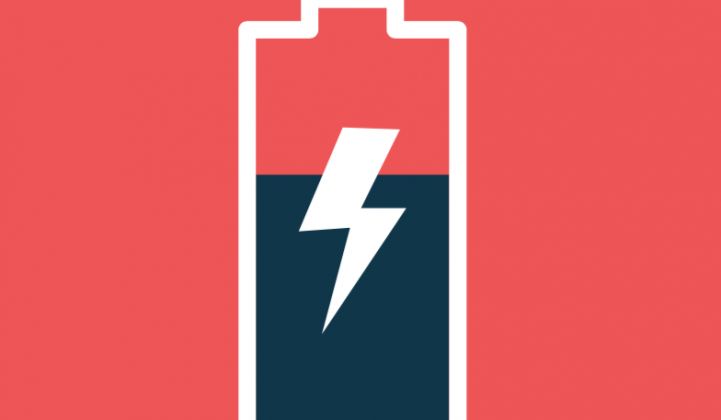Batteries are helping the grid everywhere from Aliso Canyon to South Australia. But some are concerned that battery-based storage might not be the universal panacea that evangelists believe.
Launching the Tesla Powerwall in 2015, for example, Elon Musk claimed: “The size of the batteries needed to transition all of the United States to being solar with batteries…is a very tiny amount.”
Musk seemed to indicate that batteries can take care of all the world’s renewable energy intermittency needs -- a view that was reinforced by Tesla and others’ successful bids for battery storage plants to make up for lost gas generation in California and Australia.
However, this view ignores the fact that batteries are poorly designed for cheaply storing the vast amounts of energy needed for communities and industries to ride through long-term lulls in renewable generation.
“The challenge is how to replicate the low-cost service that fossil fuels provide, but in a decarbonized system,” said Richard Heap, executive analyst at the Energy Research Partnership, a U.K. government and industry advisory body.
Other researchers, such as Dr. Björn Peters, head of energy policy at the German employers' association Deutscher Arbeitgeber Verband, claim the cost of battery storage needed to deal with once- or twice-yearly anticyclones is prohibitive.
Writing on his blog, Peters said: “If a homeowner wanted to be independent from the electricity network all year round, a storage system with several thousands of kilowatt-hours in capacity would be necessary, pricing itself out of range for most of the population.”
Focusing too heavily on battery storage may risk sidelining more effective and cost-efficient ways of dealing with grid challenges, according to Heap.
“A system approach that considers the role of all decarbonized energy vectors may come up with a much cheaper way of addressing the rare event, that may also overcome the local grid issues,” he said.
The risk of not planning for "rare events" was illustrated in the South Australian power cuts last year.
After storm damage to transmission lines caused 456 megawatts of wind generation to shut down, a smelter operated by the industrial giant Alcoa lost power for the first time in 30 years, causing the aluminum in production to solidify.
Ben Davis, vice president of the Australian Workers Union, told the Australian Broadcasting Corporation the damage was “incredibly serious. Aluminum smelters are not built to have power outages. They have to be constantly running. They have to keep the liquid alumina hot.”
The incident put the plant at risk of closure and prompted an AUD $30 million (USD $23 million) government bailout in January.
It is unclear whether a battery plant could ever provide enough long-term, grid-scale energy storage to avert such an incident, even amid continuing concerns that further blackouts may rock the Australian grid as the country’s share of renewable energy grows.
In the meantime, countries continue to promote battery storage in order to balance grids and integrate more renewables.
The U.K., for instance, last month launched a £1 billion (USD $1.3 billion), four-year Industrial Strategy Challenge Fund targeting batteries along with five other innovation areas, including self-driving vehicles and artificial intelligence.
In a 2015 report, the Energy Research Partnership advocated a balanced approach to decarbonization, with electrical storage and renewables being used judiciously alongside measures such as nuclear power generation and carbon capture and storage.
The study also found that storage yielded the greatest benefits with a discharge time of up to two days, well beyond the commercially viable duration possible with lithium-ion batteries today.
“Storage is creating a lot of noise right now,” said Nick Butlin, managing director of London-based Viriya Energy. "And much of that is head, not beer. Storage is not the only answer, as it provides solutions for short- to medium-term stability, but not the whole puzzle.”



